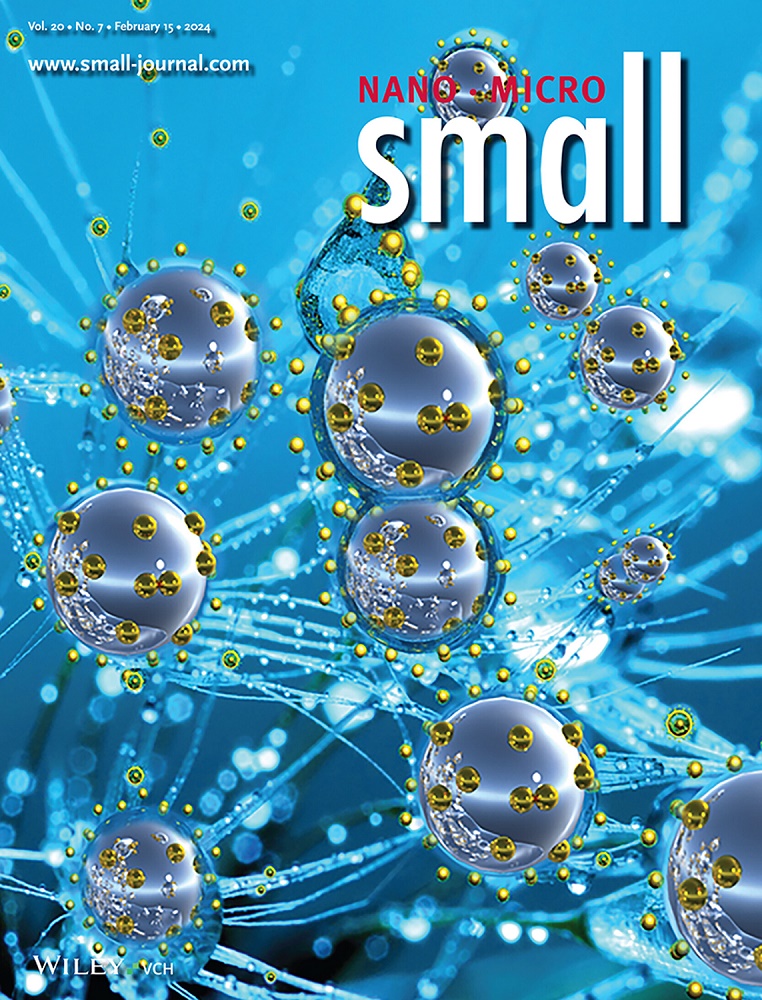Sulfur-Doped Carbon Dots as a Highly Selective and Sensitive Fluorescent Probe for Copper Ion Detection in Biological Systems
IF 12.1
2区 材料科学
Q1 CHEMISTRY, MULTIDISCIPLINARY
引用次数: 0
Abstract
Copper ions are regarded as a double-edged sword since it plays a crucial role in biological functions but can also induce various severe diseases at imbalanced levels. However, conventional methods for quantifying copper ion (Cu2+) levels often encounter complicated preparation procedures and interference from other substances. This study describes the one-pot microwave synthesis of sulfur-doped carbon dot (S_HICA) as a highly selective and sensitive fluorescent probe for Cu2+ detection in biological systems. S_HICA demonstrates improved fluorescence properties such as increased intensity and a red-shifted emission wavelength compared to carbon dots without sulfur (HICA), and S_HICA exhibits outstanding selectivity for Cu2+ through a fluorescence quenching effect. In vitro and ex vivo experiments are performed to validate the fluorescence selectivity of S_HICA, revealing that S_HICA has remarkable biocompatibility, fluorescence stability, and tolerance to varying pH levels. S_HICA presents significant potential as a fluorescent probe for detecting Cu2+ with elevated sensitivity and selectivity, as well as for the advancement of enhanced diagnostic tools that can monitor copper-related disorders in real time.

硫掺杂碳点作为一种高选择性和高灵敏度的荧光探针用于生物系统中铜离子的检测
铜离子被认为是一把双刃剑,因为它在生物功能中起着至关重要的作用,但也可能在不平衡的水平上诱发各种严重疾病。然而,传统的定量铜离子(Cu2+)水平的方法经常遇到复杂的制备过程和其他物质的干扰。本研究描述了一锅微波合成硫掺杂碳点(S_HICA)作为一种高选择性和高灵敏度的荧光探针,用于生物系统中Cu2+的检测。与不含硫的碳点(HICA)相比,S_HICA具有更好的荧光特性,如增强的强度和红移的发射波长,并且S_HICA通过荧光猝灭效应对Cu2+表现出出色的选择性。体外和离体实验验证了S_HICA的荧光选择性,结果表明S_HICA具有良好的生物相容性、荧光稳定性和对不同pH值的耐受性。S_HICA作为检测Cu2+的荧光探针具有显著的潜力,具有更高的灵敏度和选择性,以及用于实时监测铜相关疾病的增强诊断工具的进步。
本文章由计算机程序翻译,如有差异,请以英文原文为准。
求助全文
约1分钟内获得全文
求助全文
来源期刊

Small
工程技术-材料科学:综合
CiteScore
17.70
自引率
3.80%
发文量
1830
审稿时长
2.1 months
期刊介绍:
Small serves as an exceptional platform for both experimental and theoretical studies in fundamental and applied interdisciplinary research at the nano- and microscale. The journal offers a compelling mix of peer-reviewed Research Articles, Reviews, Perspectives, and Comments.
With a remarkable 2022 Journal Impact Factor of 13.3 (Journal Citation Reports from Clarivate Analytics, 2023), Small remains among the top multidisciplinary journals, covering a wide range of topics at the interface of materials science, chemistry, physics, engineering, medicine, and biology.
Small's readership includes biochemists, biologists, biomedical scientists, chemists, engineers, information technologists, materials scientists, physicists, and theoreticians alike.
 求助内容:
求助内容: 应助结果提醒方式:
应助结果提醒方式:


